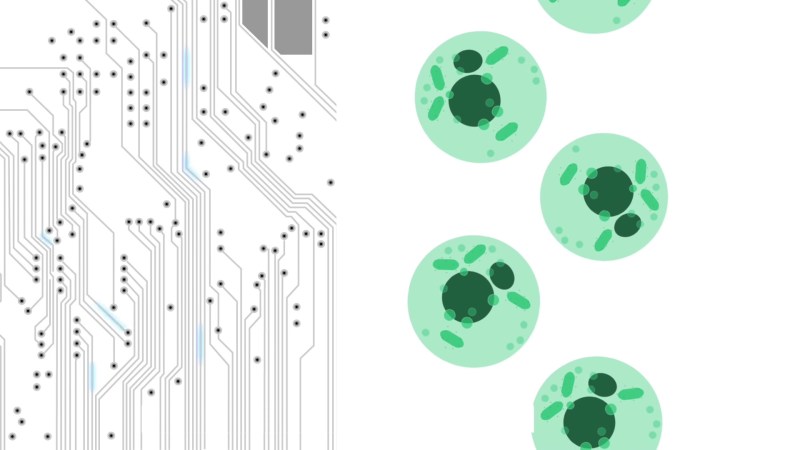Some plants react quickly enough for our senses to notice, such as a Venus flytrap or mimosa pudica. Most of the time, we need time-lapse photography at a minimum to notice while more exotic sensors can measure things like microscopic pores opening and closing. As with any sensor reading, those measurements can be turned into action through a little trick we call automation. [Harpreet Sareen] and [Pattie Maes] at MIT brought these two ideas together in a way which we haven’t seen before where a plant has taken the driver’s seat in a project called Elowan. Details are sparse but the concept is easy enough to grasp.
We are not sure if this qualifies as a full-fledged cyborg or if this is a case of a robot using biological sensors. Maybe it all depends on which angle you present this mixture of plant and machine. Perhaps it is truly is the symbiotic relationship that the project claims it to be. The robot would not receive any instructions without the plant and the plant would receive sub-optimal light without the robot. What other ways could plants be integrated into robotics to make it a bona fide cyborg?
Via IEEE Spectrum.
















“Some plants react quickly enough for our senses to notice, such as a Venus flytrap or mimosa pudica. Most of the time, we need time-lapse photography at a minimum to notice while more exotic sensors can measure things like microscopic pores opening and closing. ”
Plants will be the early-warning system to alien invasion.
I’m very curious. How so?
Usually starts with the idea that plants aren’t *simple*, and works from there.
https://www.scientificamerican.com/article/do-plants-think-daniel-chamovitz/
https://www.psychologytoday.com/us/blog/biocentrism/201703/are-plants-aware
Thank you.
I am writing up a new article on fungus and I am amazed at the complexity of the rest of the lifeforms on this planet. I thought that only mammals could really make a difference in the grand scheme. I am realizing the error of that thinking.
https://www.scientificamerican.com/article/bacteria-use-brainlike-bursts-of-electricity-to-communicate/
There’s a nature paper on a similar topic but I can’t find it at the moment.
From superorganisms
http://theazollafoundation.org/azolla/the-azolla-superorganism/
to life underground
https://www.castanet.net/news/Canada/244084/Life-underground-mysterious
Life illustrates the principle “survive and thrive” in spades.
I was at a seminar a couple of years ago where the speaker (who travels all around the world teaching better farming methods) was talking about how plowing utterly destroys the soil habitat for bacteria and mycelium, which can take half a year or more to recover. I had never realized that soil mycelium actually transports nutrients horizontally from hundreds of metres away and delivers them into a plant’s roots. Fascinating stuff!
Fungi:
https://youtu.be/XI5frPV58tY
That fungi can be mutagenic and even genotoxic is just starting to be understood. Add to that carcinogenic and even neurotoxic. There have been past examples of weaponizing fungi for use in bio-warfare.
I remember being told in a “Nuclear, Biological, Chemical” course by the US Army, that a (IIRC) fungus exists that could destroy the tires of a jeep in 24 hours.
“Vegan” Robotics, aka Terminator IV
Triffid!
Vegans will have nothing to eat when people realize that plants are aware as well… it is going to be a revolution.
That will leave us alone with the vogons – people who only eat back issues of ‘vogue’
B^)
and their atrocious poetry will kill off the rest of us!
But seriously… in this experiment we just use electrical signals from a plant to determine if light initiates a reaction. But, what if we let the plant decide. We just place our electrical sensors in the place that is not reacting to light. Then we let the plant learn what happens when it activates that region and let it learn that activating it will move it towards the light. Hmmm
Skroderiders ! Someone tell Vernor Vinge!